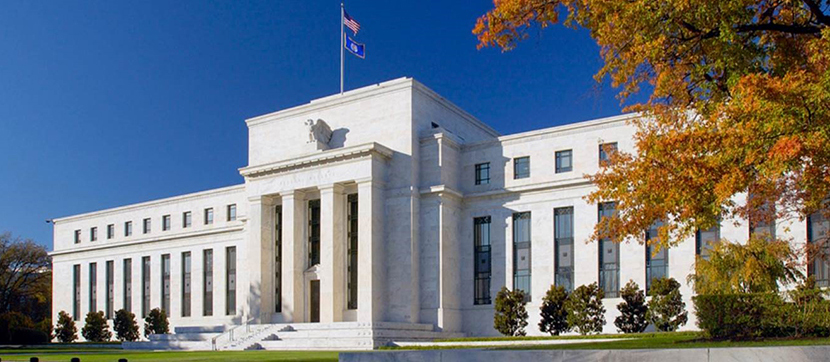
Fed Leaves Rates Alone; Ups Plans to Purchase Securities

The Federal Open Market Committee, as expected, left the federal funds rate untouched yesterday following its two-day policy meeting, and said it might stay that way until 2023.
The FOMC also sounded a more optimistic tone about economic conditions, suggesting in unemployment and economic turmoil would continue to improve through the end of the year.
“The Federal Reserve recommitted today to keep short-term rates low, and re-upped their plans to buy MBS and longer-term Treasuries at the same pace as in recent months,” said Mike Fratantoni, Chief Economist with the Mortgage Bankers Association. “The Fed’s new framework to keep rates low until inflation visibly rises beyond their 2 percent target will mean that liftoff from zero will occur later than in the last cycle – allowing the unemployment rate to fall even further than the 50-year low we saw in February.”
Fratantoni said recent key economic data – specifically retail sales and industrial production – indicate that the pace of the economic recovery slowed in August, likely due to the end of some of the fiscal supports to households and businesses. “However, the housing market continues to be quite strong, with home sales and home prices growing, and the pace of construction quickening,” he said. “Lower rates are definitely helping to support the current stretch of strong home purchase demand, while also continuing to generate robust refinance volume.”
Jay Bryson, Chief Economist with Wells Fargo Securities, Charlotte, N.C., said most FOMC members expect that rates will be on hold through 2023. “The Fed could eventually dial up the rate of its asset purchases if inflation does not soon show signs of moving up toward 2%,” he said.
Bryson noted reflecting the new framework that Fed Chairman Jermoe Powell outlined in his August 27 speech for the Jackson Hole Symposium, the FOMC said that it expects to maintain the target range for the fed funds rate at its current level until employment reaches what the Fed deems to be its “maximum” level and “inflation has risen to 2 percent and is on track to moderately exceed 2 percent for some time.”
“In our view, this explicit mention of inflation needing to reach 2% before the committee hikes rates constitutes a form of ‘forward guidance,’” Bryson said. “With the unemployment rate currently above 8% and inflation well below 2%, it appears that the FOMC will not be raising rates anytime soon. Specifically, the so-called ‘dot plot’ was extended at this meeting to show 2023 for the first time.”
The full FOMC statement (https://www.federalreserve.gov/newsevents/pressreleases/monetary20200916a.htm) appears below:
“The Federal Reserve is committed to using its full range of tools to support the U.S. economy in this challenging time, thereby promoting its maximum employment and price stability goals.
“The COVID-19 pandemic is causing tremendous human and economic hardship across the United States and around the world. Economic activity and employment have picked up in recent months but remain well below their levels at the beginning of the year. Weaker demand and significantly lower oil prices are holding down consumer price inflation. Overall financial conditions have improved in recent months, in part reflecting policy measures to support the economy and the flow of credit to U.S. households and businesses.
“The path of the economy will depend significantly on the course of the virus. The ongoing public health crisis will continue to weigh on economic activity, employment, and inflation in the near term, and poses considerable risks to the economic outlook over the medium term.
“The Committee seeks to achieve maximum employment and inflation at the rate of 2 percent over the longer run. With inflation running persistently below this longer-run goal, the Committee will aim to achieve inflation moderately above 2 percent for some time so that inflation averages 2 percent over time and longer-term inflation expectations remain well anchored at 2 percent. The Committee expects to maintain an accommodative stance of monetary policy until these outcomes are achieved. The Committee decided to keep the target range for the federal funds rate at 0 to 1/4 percent and expects it will be appropriate to maintain this target range until labor market conditions have reached levels consistent with the Committee’s assessments of maximum employment and inflation has risen to 2 percent and is on track to moderately exceed 2 percent for some time. In addition, over coming months the Federal Reserve will increase its holdings of Treasury securities and agency mortgage-backed securities at least at the current pace to sustain smooth market functioning and help foster accommodative financial conditions, thereby supporting the flow of credit to households and businesses.
“In assessing the appropriate stance of monetary policy, the Committee will continue to monitor the implications of incoming information for the economic outlook. The Committee would be prepared to adjust the stance of monetary policy as appropriate if risks emerge that could impede the attainment of the Committee’s goals. The Committee’s assessments will take into account a wide range of information, including readings on public health, labor market conditions, inflation pressures and inflation expectations, and financial and international developments.
“Voting for the monetary policy action were Jerome H. Powell, Chair; John C. Williams, Vice Chair; Michelle W. Bowman; Lael Brainard; Richard H. Clarida; Patrick Harker; Loretta J. Mester; and Randal K. Quarles.
“Voting against the action were Robert S. Kaplan, who expects that it will be appropriate to maintain the current target range until the Committee is confident that the economy has weathered recent events and is on track to achieve its maximum employment and price stability goals as articulated in its new policy strategy statement, but prefers that the Committee retain greater policy rate flexibility beyond that point; and Neel Kashkari, who prefers that the Committee to indicate that it expects to maintain the current target range until core inflation has reached 2 percent on a sustained basis.”
